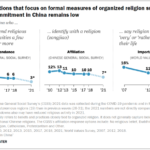Introduction, Mindfulness and Meditation
People often interchange the terms mindfulness and meditation, which can lead to confusion about their true meanings and distinctions. This confusion is understandable since both practices can intersect when approached seriously. However, it’s crucial to recognize that mindfulness and meditation represent distinct concepts. While mindfulness focuses on one’s mental state in the present moment, meditation serves as a tool for regularly cultivating attention. Let’s delve into the precise definitions and distinctions between mindfulness and meditation.
Understanding Meditation
To begin with, Verywell Mind defines meditation as a practice or tool for nurturing attention. Typically, it starts with a specific focus on deep breathing, thereby activating the vagus nerve responsible for regulating digestion, heart rate, and respiration. This practice induces a sense of calmness, enhances concentration on awareness, and fosters emotional equilibrium.

When it comes to meditation, various types cater to diverse preferences, offering a spectrum of options for initiation. Here’s a list of some common meditation categories:
- Breath Awareness Meditation: This practice involves focusing on various breathing techniques.
- Loving-Kindness Meditation: It directs attention toward oneself and loved ones, cultivating positive and compassionate thoughts.
- Mantra-Based Meditation: Participants engage in the repetition of words or phrases, either audibly or mentally.
- Visualization Meditation: Mental imagery is harnessed to induce relaxation and mental tranquility.
- Movement Meditation: Attention centers on bodily parts and movements, often during walking.
- Body Scan Meditation: Practitioners scan their bodies and observe physical sensations.
- Focused Attention Meditation: Concentration is directed toward specific objects, sounds, or controlled breathing techniques.
Unpacking the Concept of Mindfulness
Moving on, Mindful.org describes mindfulness as a fundamental human ability—to be fully present in the moment. It entails conscious awareness of one’s current location and activities without excessive reactions or feeling overwhelmed by the surroundings. Practicing mindfulness also involves attending to one’s breath and bodily sensations, facilitating genuine immersion in the “now.”
Moreover, mindfulness is an intrinsic quality within every human being; it requires no external summons. Instead, individuals must learn how to access and cultivate it. When one achieves a state of mindfulness, stress diminishes, performance flourishes, and clarity and alertness are cultivated through self-observation.
This intrinsic ability signifies that thoughts are fully aligned with the present moment—what is transpiring, one’s actions, and the environment being traversed. Occasionally, thoughts may wander, leading individuals into obsessive contemplations about past events or anxious concerns about the future, fostering anxiety.
Nevertheless, regardless of how far one’s thoughts may drift, mindfulness possesses the ability to guide individuals back to the present moment, reinstating their connection with the here and now.
Key Differences Between Mindfulness and Meditation
Transitioning to the distinctions between mindfulness and meditation, while both practices share the overarching goal of enhancing mental well-being and self-awareness, they diverge significantly in several aspects:
Focus: Meditation often commences with concentrated attention on a specific object, sound, or breathing technique. In contrast, mindfulness primarily centers on observing the present moment without a singular focal point.
Purpose: Meditation is typically utilized as a dedicated practice to hone attention and develop inner calmness. In contrast, mindfulness emphasizes being fully engaged with one’s current experiences, fostering a heightened sense of awareness.
Formality: Meditation often involves structured sessions and specific techniques, making it a more formal practice. On the other hand, mindfulness can be incorporated into daily life informally, requiring no specific regimen or designated time.
Application: Meditation serves as a tool for improving one’s concentration, relaxation, and emotional balance. Conversely, mindfulness is about living with intention, improving emotional regulation, and fostering greater self-awareness in daily life.
State vs. Practice: Transitioning to the essence of these practices, meditation can be seen as a practice—an intentional activity undertaken for a specific purpose. Meanwhile, mindfulness is considered a state of being—a way of existing and experiencing life fully.
Conclusion about Mindfulness and Meditation
In conclusion, it’s evident that mindfulness and meditation, while related, represent distinct concepts that offer unique approaches to enhancing mental well-being and self-awareness. Meditation provides a structured practice for nurturing attention and inner calmness, whereas mindfulness emphasizes being fully present in the current moment. Both approaches have valuable applications in promoting a balanced and conscious way of life, offering individuals various paths to personal growth and self-discovery. Understanding these differences empowers individuals to choose the approach that aligns best with their goals and lifestyles.










